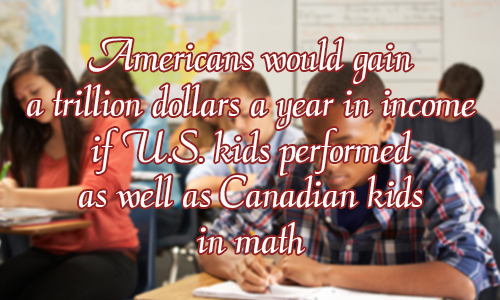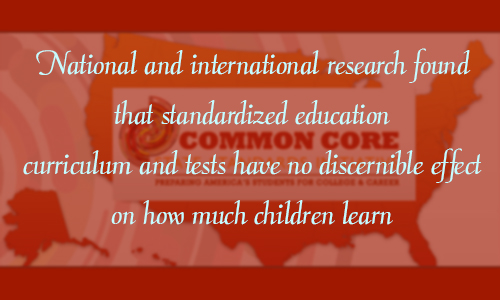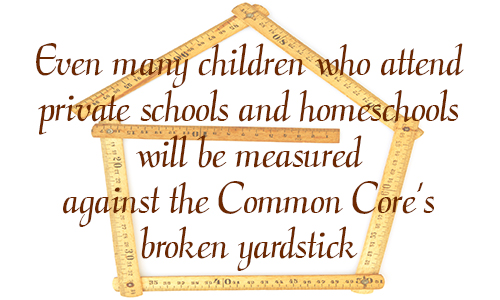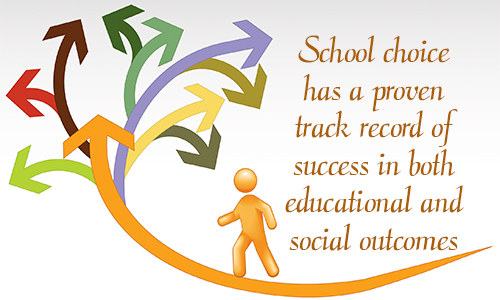By Joy Pullman
The American mind is unwell. Take any number of evidences. The rate of adults and children taking psychiatric drugs and receiving welfare because of this has skyrocketed since the 1980s, as Robert Whitaker has chronicled in Anatomy of an Epidemic. Despite throwing more money than just about every other country in the world into K-12 education, the United States has never seen a significant rise in high-school graduates’ math and reading test scores since the spending binge began.
On the latest national civics exams, 68 percent of eighth graders could not guess that most Americans think government should be a democracy, half instead answering that most Americans think government should guarantee everyone a job (an arrangement known as socialism or communism that history has proven to be a literally bloody failure). Ninety-three percent could not fill in four blanks on a chart explaining how the three branches of U.S. government legally check the others’ powers.
While more young people are graduating from high school and college now than 50 years ago, research shows that their diplomas mean far less because the academic work necessary to get those degrees has gotten far easier. And while American students perform objectively worse than comparable students abroad, nearly two-thirds believe they are above average in academic ability. As psychology professor and author Jean Twenge has noted, “the lifetime prevalence of Narcissistic Personality Disorder is three times higher (!) among those in their twenties than those in their sixties.” Young people today want to work less, yet value money more, than their counterparts of forty or fifty years ago. They also are less civically engaged and more self-focused.

Your Money and Your Life
Politicians and the media talk about the economic effects of what’s wrong with American schools, showing how much money and career advancement we’re missing because U.S kids are so poorly prepared for adult life. One estimate by a Stanford University researcher showed that Americans would gain a trillion dollars a year in income if U.S. kids performed as well as Canadian kids in math.
Of course, a rise in mental disorders and decline in work ethic will also hinder economic flourishing. So, while lost income does matter, American kids’ problems are bigger than mere money. The whole picture shows culture problems, which transcend economic problems. Schools are cultural institutions as much as they are also economic institutions. To conjecture most accurately how to improve, one must also have a holistic picture of what’s wrong.
That didn’t happen with a controversial new initiative called Common Core. Common Core is a set of national goals for math and reading in each grade, measured and enforced by national tests. Their major aim is to ensure that children graduate high school “college- and career-ready.”
Politicos on both sides of the aisle support Common Core, but as it has rolled out into schools, parents and citizens on both sides of the aisle have also opposed it rather ferociously.
Among the many reasons for public opposition, these stand out: 1) the lack of public review before the federal government pushed states into adopting Common Core; 2) the dubious academic quality of these mandates, which in bureaucrat lingo are called ‘standards’; 3) research that shows curriculum mandates do not increase student achievement; and 4) the expansion of central planning that these mandates bring about, which has dampened opportunities for parent choice and innovation in education.
Dampened opportunity for choice and innovation is a real tragedy, because research does show that parent choice both increases what students learn and benefits them in other ways, such as increasing their civic engagement, reducing their prejudices, and strengthening their families.

Let’s Examine the Evidence on Common Core
Influence-peddlers have been trying to shift America’s highly individualized and localized education system towards Europe and Asia’s more collectivist systems for about two centuries. These attempts really began to take off in the post-Civil War and Industrial Revolution eras, as education agitators sought to remake schools in the image of factories—because factories were the hip, new workforce model. Standardization was a central goal of these reformers, because they thought it provided both efficiency and equality.
The trend in American education ever since has been towards more central planning and less local control and oversight from parents and local taxpayers—even though state and local taxpayers today supply approximately 90 percent of the $600 billion that taxpayers spend on public education each year. First state, and then national, curriculum mandates and tests have been part of this long trend towards more central planning in education.
The federal government has been a primary engine for driving U.S. schools into collectivism. It was in response to federal subsidies, then mandates, that states first began centrally planning curriculum and tests.
That experience provided the data that researchers recently used to compare children in states that set high academic goals with children in states that set low academic goals. They found that education standards and tests (like Common Core) have no discernible effect on how much children learn. International research has found the same—some countries with command-and-control education systems perform well, while others with similar systems perform very poorly.
This illustrates a big problem with central planning—or assigning people far away from a problem to design solutions to that problem, another fundamental tenet of socialism and communism. It doesn’t work.
One reason for this is what economists call “the information problem.” The people who know the most about something are the people closest to it. Johnny’s mom, dad, or teacher can tell the difference between when he’s being lazy and when he doesn’t understand the lesson. A data-cruncher in an office somewhere far away from Johnny will only see that he did, or did not, get sent to the principal’s office. That will tell them nothing about what’s the best teaching approach for him, and when.
Why Common Core is Low-Quality & Coercive
Central planning is the opposite of self-government. Instead of setting people free to manage their own affairs, central planning constrains everyone by making them do what a few well-connected people have decided they should.
Giving so much power to so few people sets up a social or political system for corruption, which creates worse results for society than if people had been free to address their own needs. It’s a lot easier to influence a few key people than it is to persuade the populace at large.
This happened with Common Core. Because Americans had consistently rejected attempts at creating national standards and tests through Congress, Common Core’s creators did an end-run around legislatures. They funneled the project through private organizations, and petitioned the Obama administration to make states sign on.
The administration obliged. In 2010, it required states to enforce Common Core to get a shot at federal grants; and in 2011, it required the same if states wanted the administration to release them from following the largest federal education law.
Like Obamacare, states had to pass Common Core to find out what was in it—because the Obama administration required states to sign on to Common Core before it was even published if they wanted a better chance at extra federal money during the 2008-09 recession.
Some of the people who wrote Common Core said the rush to get it done meant Common Core was not as high-quality as proponents promised. The high-school math section, for example, was missing major sections when it was published, which Common Core creators backfilled in later, after teachers and textbooks were already learning the lower-quality earlier version.
Because the people who wrote Common Core were hired by private organizations and did all their work free from the oversight of open-records and open-meetings laws, we will never know exactly what other quality compromises they made. But we know they exist.
Common Core contributor and internationally recognized math standards expert R. James Milgram has noted that Common Core math graduates students at least two years behind their international peers, and lacks many bits of key knowledge kids need on their way to algebra and beyond. Major emphases of Common Core in literature, such as “cold reading” and increasing kids’ nonfiction intake, have no basis in research.

One Ring to Rule Them All
Despite these major quality flaws, most U.S. children must now learn what Common Core sets forth, thanks to a series of interlocking federal mandates. Even many children who attend private schools or homeschool will be measured against Common Core’s broken yardstick, because many states require them to take Common Core tests, and anyone who wants to get into college must typically take the ACT and SAT, which now both also measure Common Core.
Common Core has ratcheted up one-size-fits-all, factory-style education in America just as the culture and economy have been becoming something completely different. We’ve moved from the Industrial Age to the Information Age. We’re moving from standardization to customization.
Think of perhaps the most archetypal modern invention: 3-D printers. People are already customizing cars, houses, coffee cups, jewelry, you name it, using these printers. 3-D printers allow people to take a stock idea and alter it to fit their needs, interests, and quirks—or to come up with a completely unique idea and incarnate it relatively quickly. Related Information-Age innovations, such as the ride-sharing app Uber, simultaneously create new economies and new cultures. Common Core is more completely standardizing American education just as the world is becoming less standardized, more flexible, and diverse.

Let’s Move Education Into the Information Age
Polls consistently find that most Americans think our schools need to improve. A recent one is typical: It shows that three in five Americans think K-12 education has gotten off on “the wrong track.” Forty-one percent, a plurality, would prefer to enroll their child in a private school. The next most-preferred schooling option for Americans, at 36 percent, was public school. Yet 85 percent of American children attend public schools.
This means most American parents are stuck having to keep their kids in schools they think are, at most, second-best for their kids. They would really like to import a bit of 3-D printing culture and possibilities into education. States have just begun to allow a good deal more of this in the past five years by passing school-choice laws that let kids take their education dollars to any school parents choose.
Perhaps the most exciting school-choice concept is called education savings accounts (ESAs), which allow parents to divide their kids’ education dollars among a variety of education offerings such as tutoring, curriculum, online classes, sports teams, special-needs therapy, and musical instruction, instead of just turning over the whole chunk to one school. A 2015 poll found that 62 percent of Americans support ESAs.
Unlike Common Core, school-choice has a proven track record of success, both at increasing education outcomes like graduation rates and test scores, and at improving social outcomes such as reducing racial segregation, increasing civic engagement, and increasing respect for other people’s rights. It’s also a money-saver, rather than a money-spender like Common Core. That’s a big deal given America’s growing debt and aging population.
Common Core, however, directly threatens the success of school choice, which works so well partly because it lets individuals solve their own problems rather than imposing the same solution on every uniquely different individual. Many state school-choice programs require participating schools to administer Common Core tests, which in turn pushes them to reduce the very curricular and culture diversity that makes them so effective.
Common Core also reflects, rather than corrects, the narcissism of American young people. Its major justification, also reflected in federal and state legislation, is getting children “college- and career-ready.” Yet education in a self-governing republic needs to be far more than technical training for the workforce. Yes, everyone needs to be capable of meaningful work, but education also needs to transcend that goal. For the health of a republic that rests its prime authority upon the people at large rather than a ruling class, education should teach young people about the necessity of virtues such as self-control, charity, neighborliness, self-sacrifice and more.
Research and experience shows that central-planning schemes like Common Core waste time and money while starving civic character. They also show that empowering individuals to address their own needs does the opposite.
School choice, which has in the past five years spread from eight states and DC to now 27 states and DC, is a prime proven example of individual liberation. Kids need more freedom like this and less Common Core.
About the Author: Joy Pullman is a research fellow on education policy for The Heartland Institute and managing editor of The Federalist, a web magazine on politics, policy, and culture. She was the 2013-14 recipient of a Robert Novak journalism fellowship for indepth reporting on Common Core national education standards. Prior to that, Pullman was the former managing editor of School Reform News, where she interviewed and produced podcasts with many of the leading figures in school reform, and assistant editor of American Magazine at the American Enterprise Institute. She speaks often on the education issue and was a featured presenter at the Institute’s June 2013 Conservative Women’s Network meeting on Common Core national standards and testing (see video at right). A former middle and high school teacher, Pullman graduated from the Hillsdale College honors program with an English major and journalism concentration.

